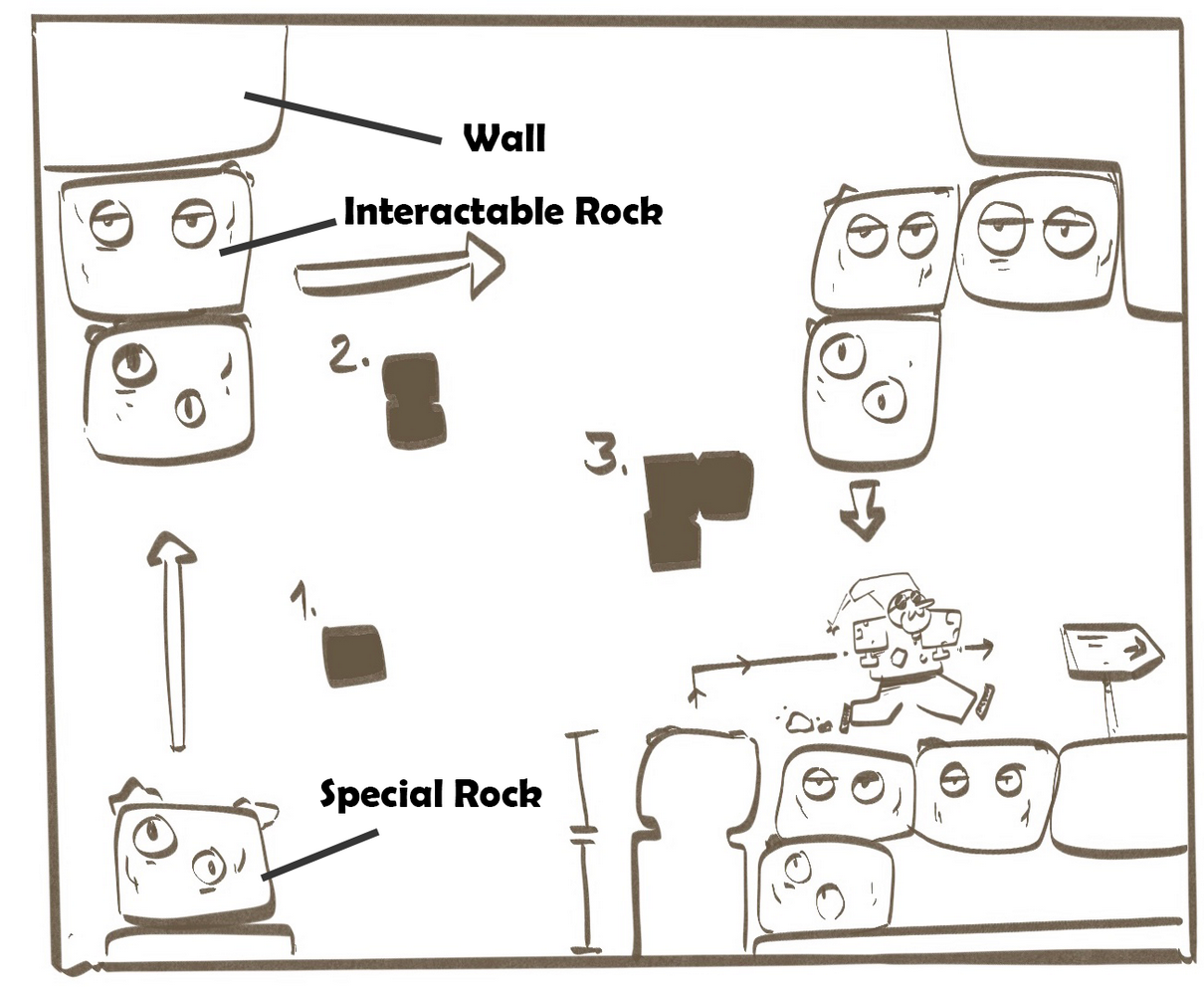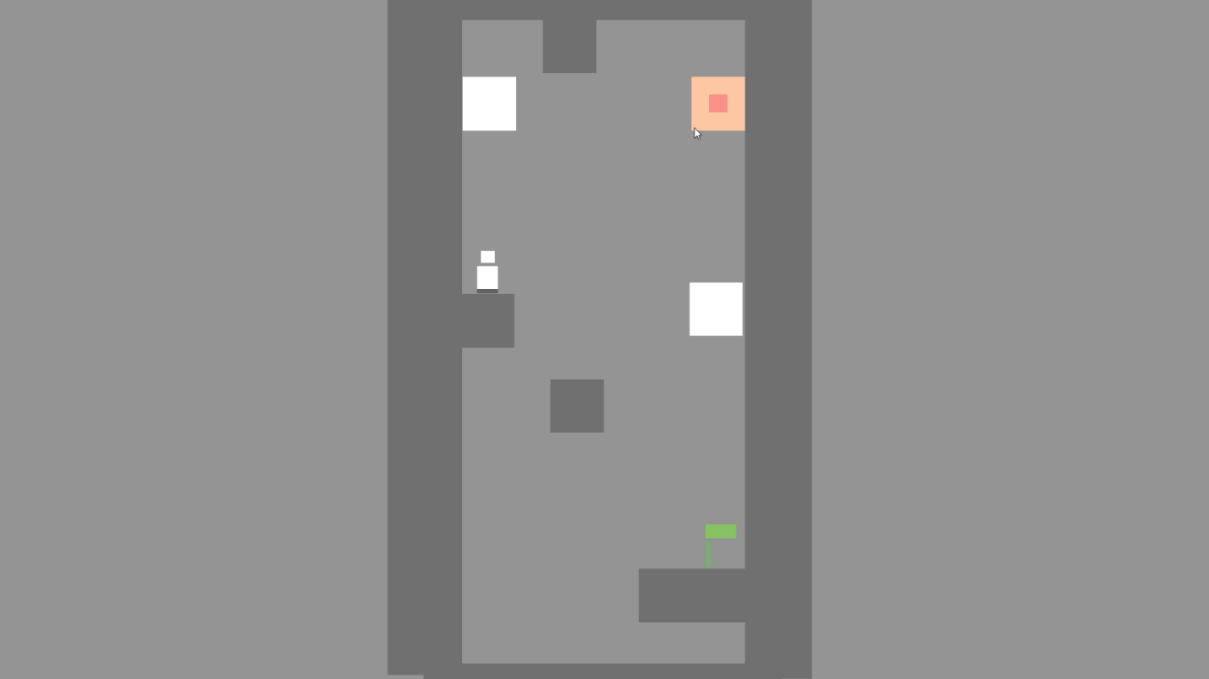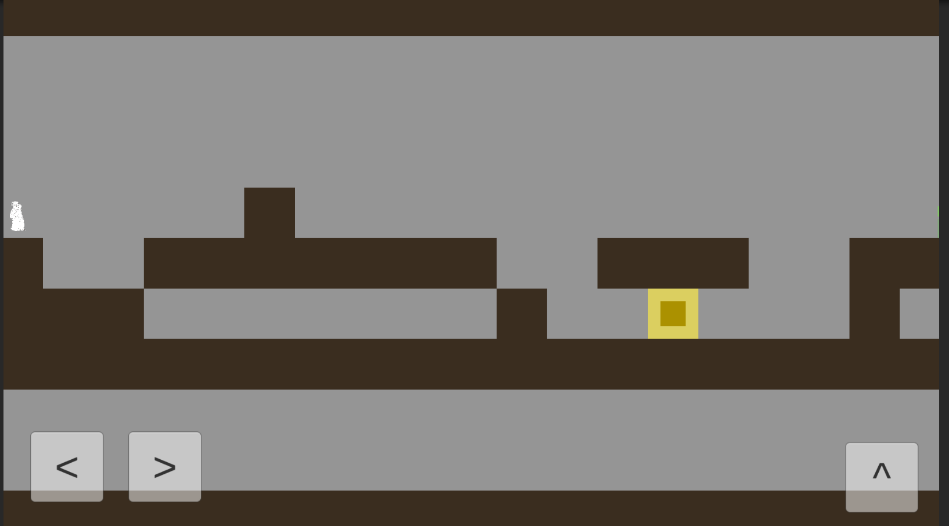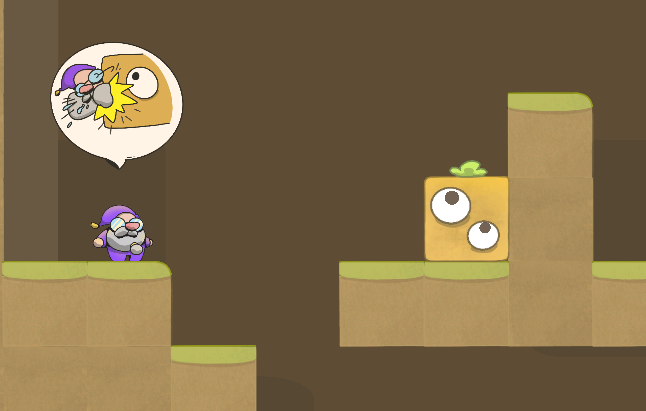The Rock Sorcerer
I wanted to create a 2D platformer game where the player not only has control over the character (The Rock Sorcerer) but over some platforms too (The Rocks) - and this control over the platforms is what sets this game apart from other 2D platformers. Although not included in the final product, the team planned to include levels where moving the Sorcerer and the Rocks together would be an important element - these levels would focus on action packed gameplay compared puzzle-solving levels we have. For this project, I was responsible for:
- Art,
- Animation,
- Programming,
- Game Concept
The Problems
Portrait mode vs Landscape
Originally the game was pitched for mobile devices (android & iOS) and an important decision had to be made - should the game orientation be landscape or portrait? Which orientation would favor the gameplay and allow us to create more interesting levels?
Since the game does not allow the Sorcerer to ride the Rocks, i.e., while the player is on the Rocks, the Rocks cannot move (reason explained below). Thus having so much vertical space did not make sense since the player can cover more distance horizontally by walking over the Rocks but cannot stand on the Rocks and push the Rocks upwards. The levels for a portrait mode game would be very restricted and would feel similar.
Killing the Sorcerer on impact or not
Another game design problem I had to think of: What happens when the player pushes the Rocks towards the Sorcerer? Crush the Sorcerer, failing the level? Stopping the Rocks right before touching the Sorcerer? Early prototype allowed the player to push the Rocks towards the Sorcerer and the Rocks would stop on contact with the Sorcerer - the Sorcerer acted as a wall. This proved to be troublesome when I saw that the players were using the Sorcerer as a mean to create custom stopping points for the Rocks. Since it is a puzzle game and every piece of Rock and Wall is carefully placed by the level designer, using the Sorcerer to stop the Rocks would provide shortcuts to the player and the game would not played as the designers intended. There were other creative ways the players were exploiting this bug - while standing on the Rock they would jump and push the Rock upwards, on constantly repeating these steps the player could easily reach any height. The solution was to check if the Sorcerer is in the direction where the player wants to push the Rocks in. If it was the case, then the Rocks would simply not move, and a visual warning would pop up above the Sorcerer.
The Big Success and Takeaways
The end product turned out to be a huge success! Although the aim of this assignment was not to create a great game but to gain experience working as a team, following deadlines, creating a production timeline and working on the GDD. Keeping the scope realistic - based on individual team member’s strengths and weaknesses, time & resources available, and planning ahead for potential hurdles helped create this polished piece.
Personal takeaways from this project:
- Know your team's strengths and weaknesses
- Be realistic with the scope
- Plan out potential hurdles and solutions
- Create a strong working prototype, spend rest of the time polishing it
- Engage with all the team members
- Be receptive to all the ideas, from any team member






